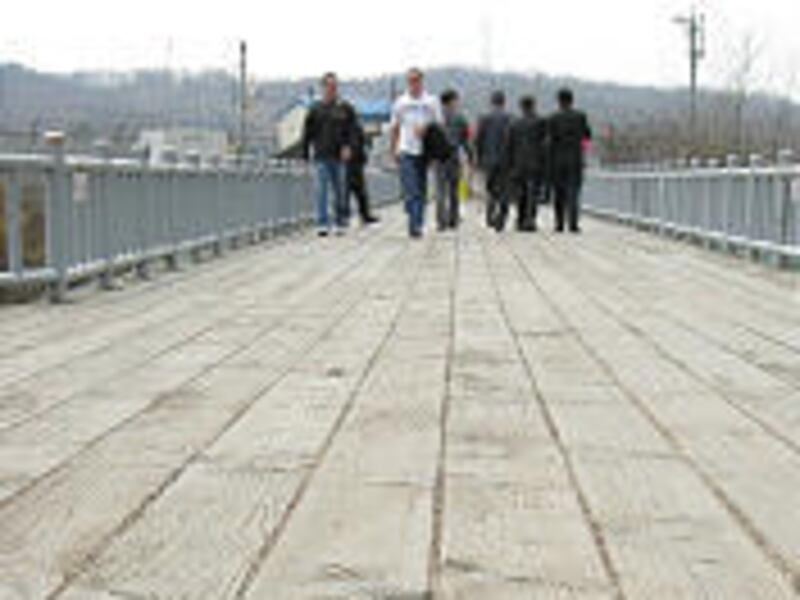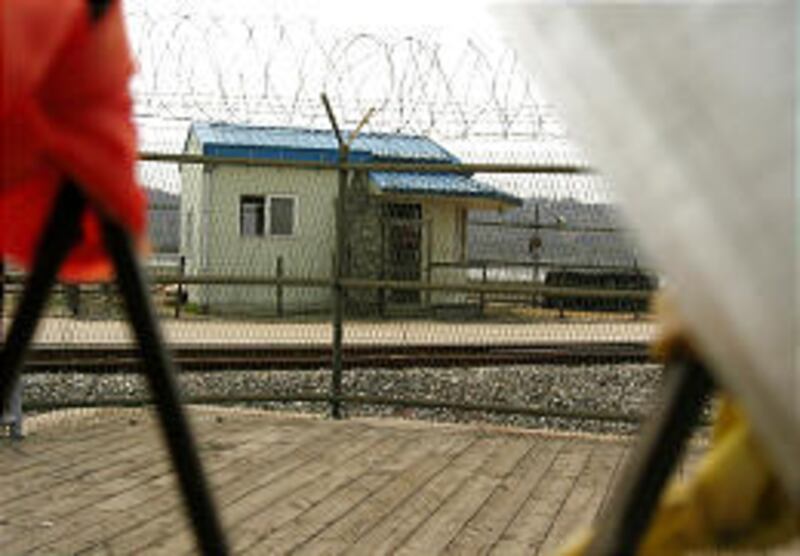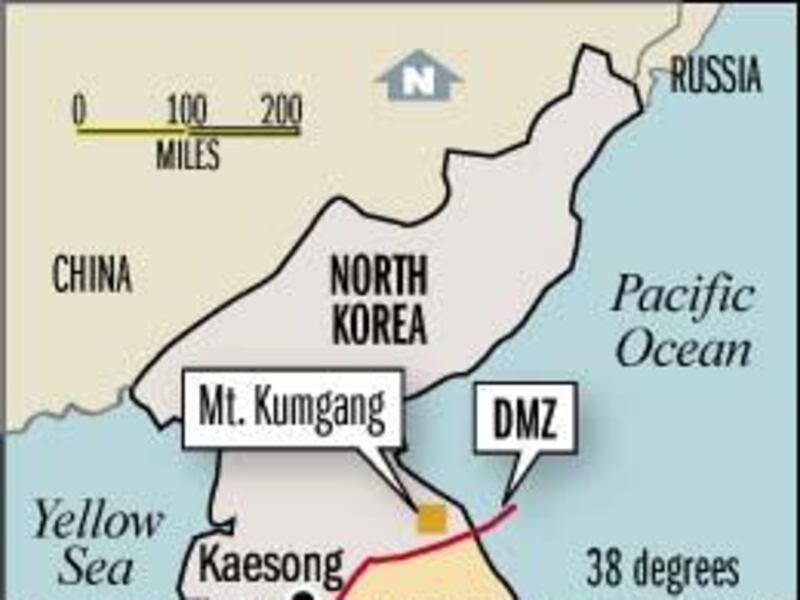MOUNT KUMGANG, North Korea — A brown-clad soldier armed with a red flag stands at attention on a pedestal next to the road just a few yards into North Korea.
He carries a rifle, too, but it is the flag held at his side that draws curiosity. A half mile or so down the road, another soldier strikes the same rigid pose, flag in hand.
"They're watching you," says our South Korean escort, Byun Ha Jung.
Our bus carries seven American reporters participating in the 2007 Korea-U.S. Journalism Exchange sponsored by the East-West Center in Honolulu. The two-week fellowship included a day trip to one of North Korea's most beautiful natural attractions, Mount Kumgang.
Byun has already told us not to take photos as we pass through the demilitarized zone separating the two Koreas. Other than a metal fence topped with barbed wire and the Sea of Japan in the distance, there isn't much to see. We're told land mines still dot the hilly landscape.
Now in the North, Byun sounds the photo warning again, only this time it is more ominous.
The soldiers will raise their flags and stop the bus should they see anyone snapping pictures, Byun says. He's not clear about what will happen if the bus is stopped. Still, no one takes photos. Or at least no one is caught.
Our foray into North Korea came with many restrictions.
No binoculars, no telescopes, no high-powered camera or camcorder lenses. No cell phones or wireless equipment. Also banned are printed materials (other than money — preferably U.S. dollars), audio tapes, CDs or images that could be used for propaganda purposes.
Cameras were allowed but we had to list the make, model, serial number and lens size on a form, presumably for the government to scrutinize.
At the North Korean immigration office, a white, circus-size tent, we're told not take pictures but to have our cameras visible in our hands. An impassive soldier in a brown uniform and a visored hat that appears too big for his head stands sentry outside. He doesn't have a red flag, but he does have a gun.
An immigration officer in the tent carefully eyeballs each of our passports and visas before letting us through. Only Daniel Yi in our group has trouble.
The unsmiling officer questions the Los Angeles Times reporter about a discrepancy on his U.S. passport.
As Yi, who speaks Korean, pleads with the officer, our South Korean escort laughs out loud.
Byun explains that there is nothing to worry about. This happens every day. Immigration officers have to look like they're doing their jobs, he says.
It doesn't hurt Yi's case that Byun's company, Hyundai Asan, paid the North Korean government $1 billion for the exclusive rights to build a resort at the base of Mount Kumgang.
Yi makes it in. But the scene will be replayed when he leaves North Korea.
A person in a brown bear costume and women wearing banners reading "Welcome to Kumgang" greet our entry into the country. I don't know what we expected, but it wasn't this.
North Korea considers the area where the flag-bearing soldiers are posted a military base.
Tanks and trucks equipped with artillery stand poised to strike from concrete bunkers, usually in groups of five, in the brown hills above green but muddy farmland.
Farmers in dark clothing work the rice paddies while cows graze in the fields. A cow pulling a wagon passes a new-looking but idle red tractor, the only nonmilitary vehicle in sight. A man carefully carries his bike across a log bridge spanning an irrigation ditch.
Drab villages with traditional Korean slanted tile roofs and rundown apartment houses intersected by dirt roads aren't far from the fence line.
As we exit the bus at the Kumgang resort, we're finally allowed to take photos, though a village just outside the perimeter is off limits. But the photo freedom doesn't last long.
On our way to the trailhead for a hike to Kuryong Falls, the no-photo rule is imposed as we pass through some woods.
"If you take a picture here they will find out. Trust me. They are hiding," Byun says.
Once on the trail, photos are permitted. The path follows a crystal clear river through a narrow canyon. A light dusting of snow covers the rocky peaks, and rain falls for much of the chilly 5-mile hike. Young North Korean women dressed in red mountain gear sell snacks along the path, while young men in blue jackets work as a mountain rescue team.
Our hike ends with a North Korean meal called naengmyon, a dish of cold buckwheat noodles topped with eggs, meat and vegetables. It isn't too bad.
Workers in the shops and restaurants line the streets to wave goodbye as the buses head back to the border.
The trek to South Korea again takes us through the North's immigration tent. Yi, the Los Angeles Times reporter, is less than thrilled to see the same officer waiting for us. Again, the officer questions the discrepancy on his passport.
Again, Byun, our Hyundai Asan escort, isn't worried even as Yi is ushered to another immigration official. Byun pays a $10 fine and Yi is home free.
And we make it back to South Korea without a flag-raising experience.
E-mail: romboy@desnews.com





